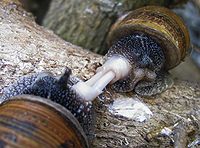
Multiple paternity and the number of offspring: A model reveals two major groups of species
Sign Up to like & getrecommendations! Published in 2021 at "BioEssays"
DOI: 10.1002/bies.202000247
Abstract: Parentage analyses via microsatellite markers have revealed multiple paternity within the broods of polytocous species of mammals, reptiles, amphibians, fishes and invertebrates. The widespread phenomenon of multiple paternity may have attending relationships with such evolutionary… read more here.
Keywords: null model; paternity number; number offspring; paternity ... See more keywords

How many fathers? Study design implications when inferring multiple paternity in crocodilians
Sign Up to like & getrecommendations! Published in 2022 at "Ecology and Evolution"
DOI: 10.1002/ece3.9379
Abstract: Abstract Up to 10 males were reported to sire clutches of crocodilian eggs but review of the underlying study designs raised questions of potential upward bias of inferred sire numbers. To test this premise, different… read more here.
Keywords: study design; many fathers; number; multiple paternity ... See more keywords

Comparative analysis of multiple paternity in different populations of viviparous black rockfish, Sebastes schlegelii, a fish with long-term female sperm storage
Sign Up to like & getrecommendations! Published in 2017 at "Marine Biodiversity"
DOI: 10.1007/s12526-017-0713-4
Abstract: The black rockfish (Sebastes schlegelii) has a viviparous reproductive pattern and long-term sperm storage. Multiple paternity is frequently reported in this species. Six polymorphic microsatellite markers were applied to genotype 23 pregnant females (11 wild… read more here.
Keywords: black rockfish; paternity; rockfish sebastes; group ... See more keywords

Very low rate of multiple paternity detected in clutches of a wild agamid lizard
Sign Up to like & getrecommendations! Published in 2018 at "Australian Journal of Zoology"
DOI: 10.1071/zo18006
Abstract: Abstract. Genetic mating systems described for squamate reptiles range from primarily monogamous to completely polygynandrous. The presence of female multiple mating is almost ubiquitous among squamates and even occurs, albeit at a low rate, in… read more here.
Keywords: low rate; paternity; rate multiple; mating ... See more keywords

Multiple paternity in superfetatious live‐bearing fishes
Sign Up to like & getrecommendations! Published in 2022 at "Journal of Evolutionary Biology"
DOI: 10.1111/jeb.14019
Abstract: Superfetation, the ability to carry several overlapping broods at different developmental stages, has evolved independently multiple times within the live‐bearing fish family Poeciliidae. Even though superfetation is widespread among poeciliids, its evolutionary advantages remain unclear.… read more here.
Keywords: bearing fishes; multiple paternity; overlapping broods; turrubarensis ... See more keywords

Regional variation in multiple paternity in the brown smooth-hound shark Mustelus henlei from the northeastern Pacific.
Sign Up to like & getrecommendations! Published in 2022 at "Journal of fish biology"
DOI: 10.1111/jfb.15050
Abstract: Multiple paternity (MP) in the brown smooth-hound shark (Mustelus henlei) was assessed in 15 litters (15 mothers and 97 embryos) collected in the northern Gulf of California of which 86.7% were sired by more than… read more here.
Keywords: paternity brown; smooth hound; brown smooth; henlei ... See more keywords

First evidence of multiple paternity in the blue shark (Prionace glauca).
Sign Up to like & getrecommendations! Published in 2022 at "Journal of fish biology"
DOI: 10.1111/jfb.15272
Abstract: Multiple paternity (MP) is defined as the behaviour in which females successfully mate with multiple males leading to offspring from different sires within the same litter. MP seems to be frequent and an evolutionary advantage… read more here.
Keywords: shark prionace; multiple paternity; blue shark; glauca ... See more keywords

Pollinator identity and spatial isolation influence multiple paternity in an annual plant
Sign Up to like & getrecommendations! Published in 2017 at "Molecular Ecology"
DOI: 10.1111/mec.14115
Abstract: The occurrence and extent of multiple paternity is an important component of variation in plant mating dynamics. However, links between pollinator activity and multiple paternity are generally lacking, especially for plant species that attract functionally… read more here.
Keywords: pollinator identity; plant; multiple paternity; pollinator ... See more keywords

Paternity Outcomes in the Freshwater Gastropod, Chilina dombeiana in the Biobío River, Chile
Sign Up to like & getrecommendations! Published in 2017 at "PLoS ONE"
DOI: 10.1371/journal.pone.0169574
Abstract: Studying the mating system of obligate aquatic organisms that inhabit river ecosystems is important for understanding its evolution as well as the role of biological and environmental factors in modulating population dynamics and species distributional… read more here.
Keywords: chilina dombeiana; paternity; biob river; multiple paternity ... See more keywords